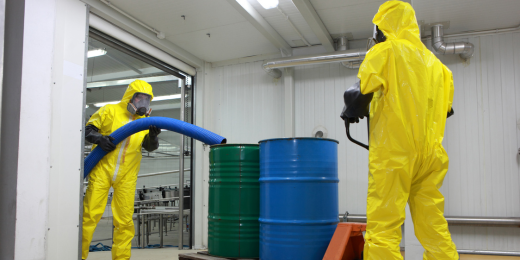Rumored Buzz on Reclaim Waste
Rumored Buzz on Reclaim Waste
Blog Article
The Buzz on Reclaim Waste
Table of ContentsThe Greatest Guide To Reclaim WasteThe Best Strategy To Use For Reclaim Waste6 Easy Facts About Reclaim Waste Described9 Easy Facts About Reclaim Waste ExplainedTop Guidelines Of Reclaim Waste
Domestic sewer waste refers to the waste and products from a domestic septic storage tank. The proper monitoring and disposal of domestic sewage waste require liquid waste to be moved to a sewage treatment plant where the proper techniques and devices are applied to cleanse and dispose of waste.
Commercial waste commonly includes prospective dangers, such as combustible products or a combination of liquid and solid waste items, and calls for an advanced and detailed disposal procedure. The disposal of commercial waste typically entails the purification of waste prior to transport to make sure secure and appropriate disposal. Industrial waste is created from byproducts and runoff of commercial processes and manufacturing.
This kind of waste can not use the very same sewer administration transport or processes as septic or industrial liquids. The hazardous waste monitoring process calls for the assessment and screening of liquid waste prior to it undertakes the disposal process (liquid waste disposal melbourne). Runoff waste is the liquid waste that comes from drainage and excess stormwater in very booming locations or cities
Overflow waste can trigger contamination and flooding if not managed properly. Find out more concerning sewer cleaning and waste administration. Ensuring proper waste management can avoid calamities and lower ecological damage. Both people in property settings and professionals in industrial or production industries can benefit from comprehending the processes and policies of fluid waste monitoring.
Reclaim Waste Fundamentals Explained
Contact PROS Providers today to discover about our waste monitoring and disposal solutions and the appropriate ways to look after the fluid waste you produce.
(https://filesharingtalk.com/members/604691-reclaimwaste1)This so-called 'wastewater' is not only an important source however, after treatment, will be released to our land, rivers or the sea. Used water from commodes, showers, baths, kitchen sinks, washings and industrial procedures is understood as wastewater.

water utilized to cool machinery or clean plant and tools). Stormwater, a form of wastewater, is drainage that streams from agricultural and metropolitan locations such as roofings, parks, yards, roads, paths and seamless gutters right into stormwater drains, after rain. Stormwater moves untreated directly to neighborhood creeks or rivers, eventually getting to the sea.
Some Known Details About Reclaim Waste
In Queensland, the majority of wastewater is dealt with at sewage therapy plants. Wastewater is transported from residential or commercial websites with a system of drains and pump stations, recognized as sewage reticulation, to a sewer treatment plant.
The Division of Natural Resources advises city governments regarding managing, operating and maintaining sewage systems and treatment plants. In unsewered locations, local governments might call for householders to set up specific or home sewage treatment systems to treat residential wastewater from commodes, kitchen areas, bathrooms and washings. The Division of Natural Resources authorises using house systems when they are shown to be reliable.
In some new subdivisions, treatment of some stormwater to remove clutter, sand and gravel has started utilizing gross toxin catches. Wastewater treatment takes place in 4 stages: Removes strong matter.
Wastewater then streams right into huge storage tanks where solids resolve and are gotten rid of as sludge. Grease and residue are skimmed from the surface. Makes use of tiny living microorganisms called micro-organisms to break down and get rid of staying liquified wastes and fine fragments. Micro-organisms and wastes are integrated in the sludge. Gets rid of nitrogen and phosphorus nutrients that could create algal blooms in our rivers and intimidate aquatic life.
Reclaim Waste Things To Know Before You Get This
Nutrient elimination is not readily available at all sewer treatment plants since it needs costly specialist devices. Clear liquid effluent created after treatment may still include disease-causing micro-organisms - liquid waste disposal.

This typically indicates wastewater needs to be treated or impurities removed prior to it can be released to waterways. A lot of wastewater flows right into the sewerage system. Under the Act, city governments carry out approvals and licences for ecologically pertinent activities (Periods) entailing wastewater launches that might have a neighborhood effect. The division provides approvals and permits to ERAs involving wastewater launches that might have a local or statewide impact.
About Reclaim Waste
Otherwise, examples are considered lab analysis. Commonly site here many tests are needed to develop the degrees of each of the various pollutants such as oils, hefty steels and pesticides in water. Tracking gives accurate details concerning water quality and can confirm that licence conditions are being satisfied. The information acquired with surveillance provides the basis for making water quality decisions.
Report this page